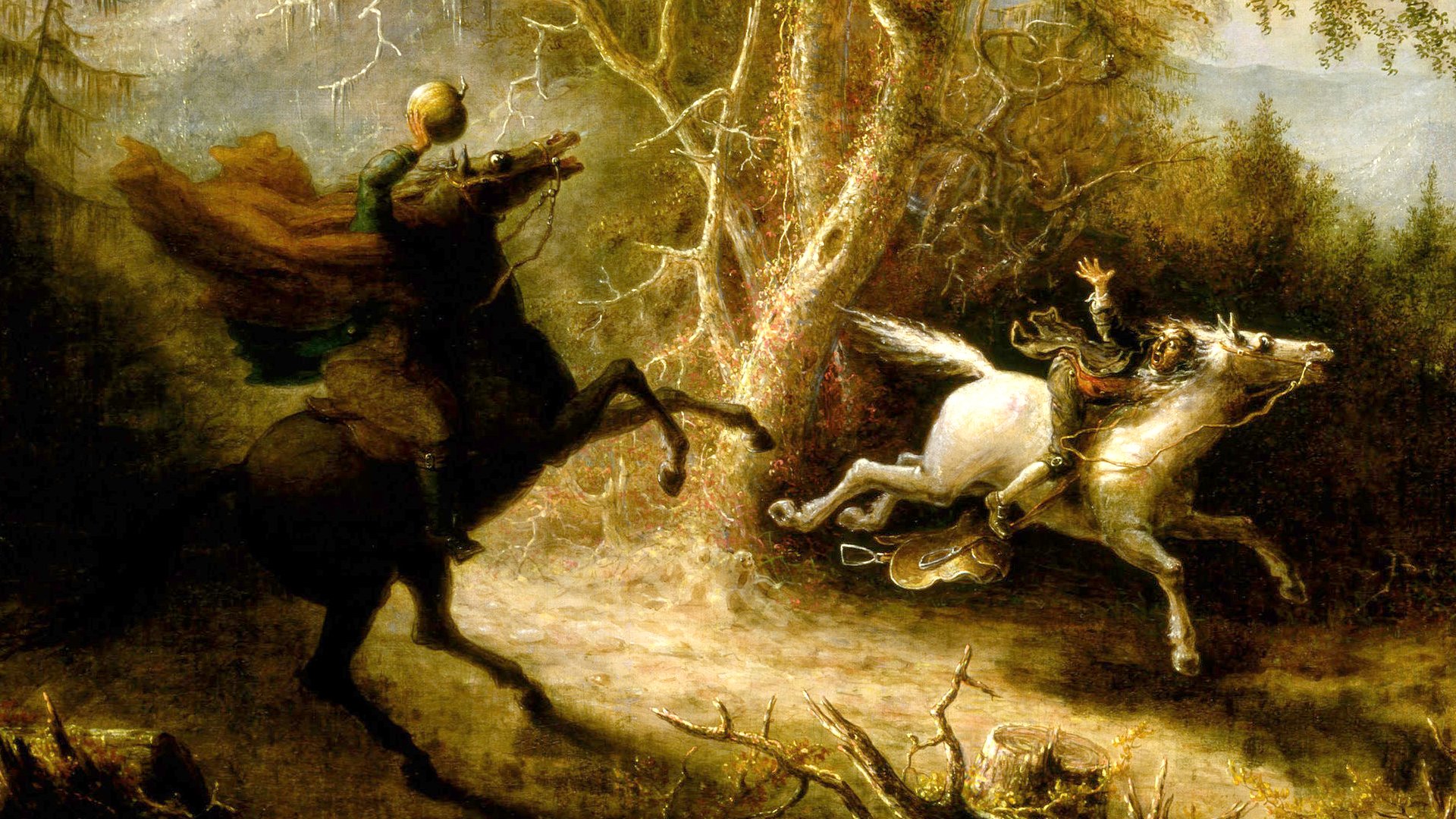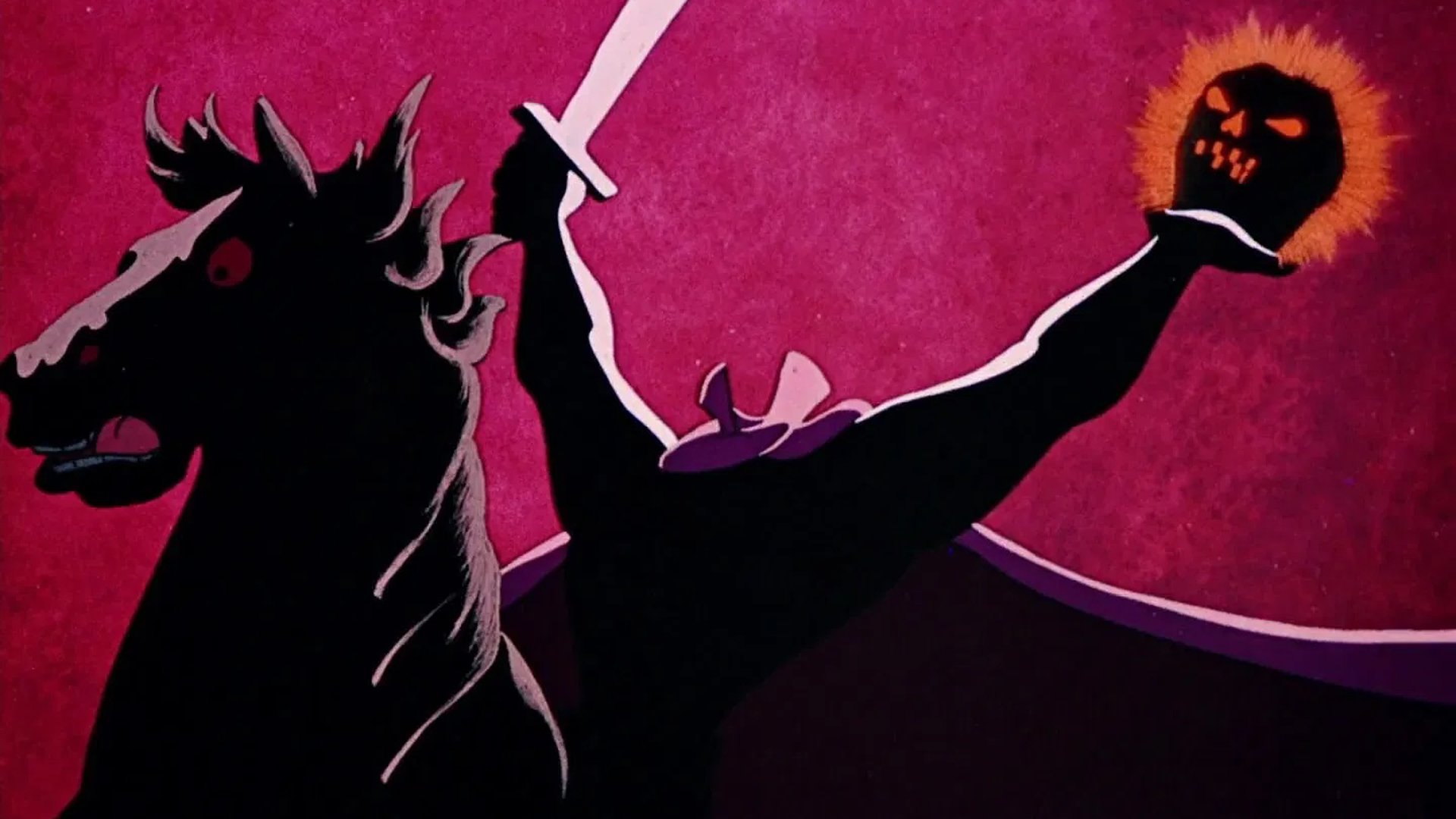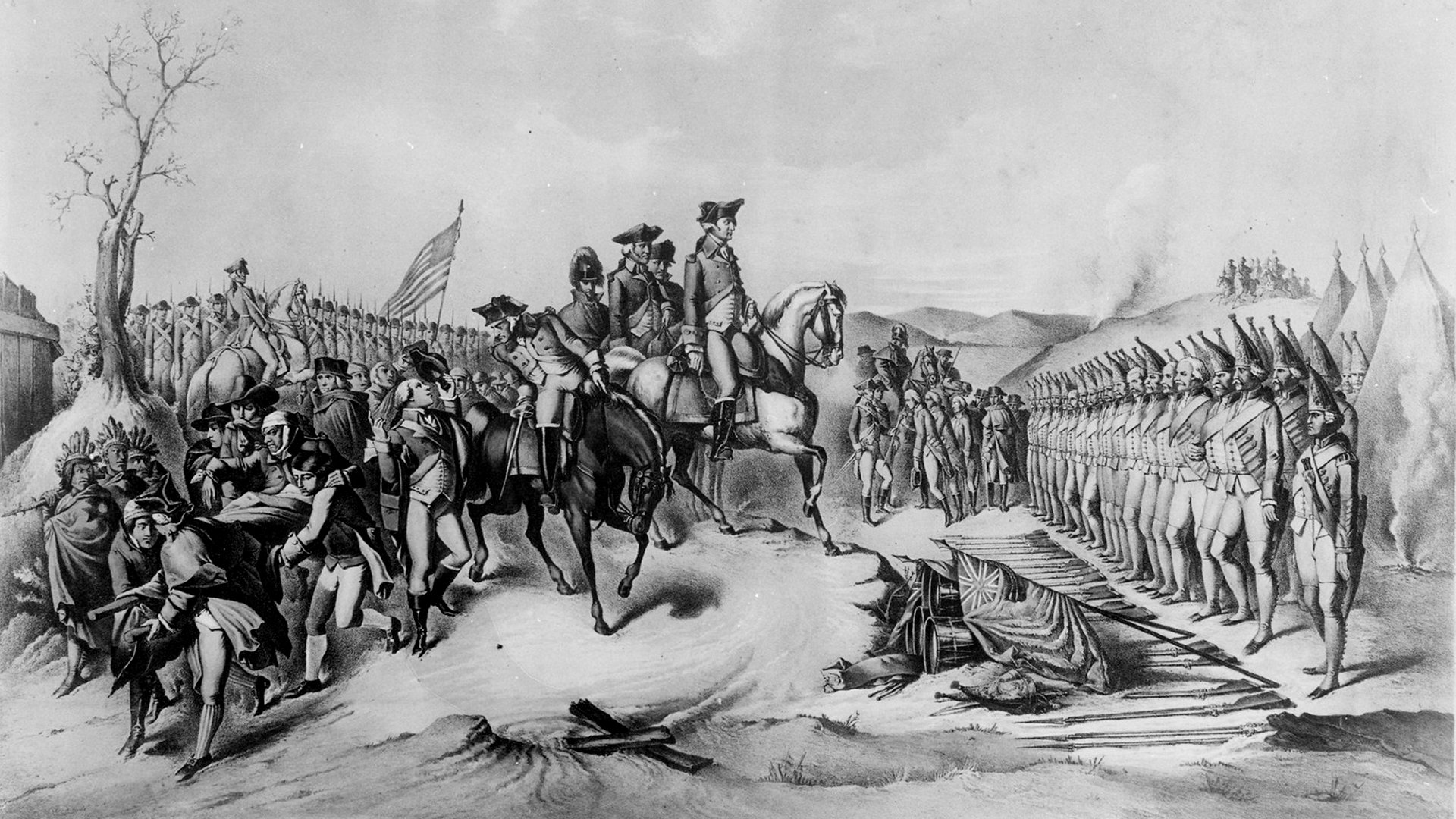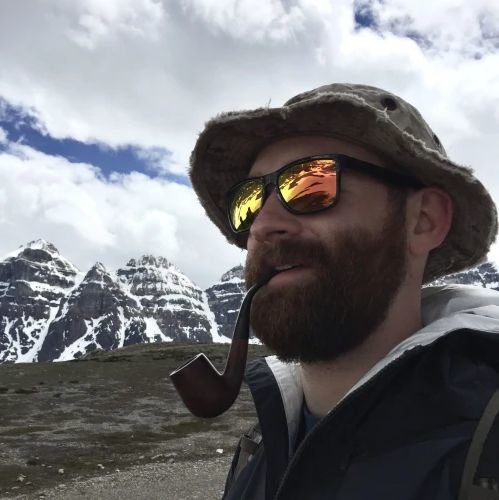
The Headless Horseman Pursuing Ichabod Crane by John Quidor. Photo courtesy of Wikimedia Commons.
The headless horseman needs little introduction. Perched atop a phantom steed, with his flowing black cape and jack-o’-lantern head, he is one of the most immediately recognizable figures in horror iconography.
Over the years, he has appeared in countless books, films, and television shows, and in various permutations, with recent examples including on-screen villains like Pumpkinhead, Sam from Trick ‘r Treat, and of course, Christopher Walken’s spike-toothed rendition of the phantom rider in Tim Burton’s Sleepy Hollow. Come every fall, you’ll start seeing his glowing orange face everywhere — on beer labels and bags of coffee, in candy commercials, and hanging out on creepily decorated lawns along with zombies, ghosts, and giant plastic spiders. He’s basically the Santa Claus of Halloween.

The headless horseman as seen in Disney's The Adventures of Ichabod and Mr. Toad. Screenshot via YouTube.
Given how ubiquitous he has become, it might be hard to fathom that the headless horseman owes his immense popularity to the work of just one man: the 19th-century American essayist and fiction author Washington Irving.
Irving didn’t conjure the headless horseman out of thin air. Similar characters had been depicted in European folklore for centuries. But it was Irving who introduced the archetype to the American mainstream when, in 1820, he published "The Legend of Sleepy Hollow," his famous short story about the ghost of a “Hessian trooper whose head was carried off by a cannonball in some nameless battle of the Revolutionary War.” Interestingly, it seems the backstory of Irving’s headless trooper wasn’t entirely his invention either. In fact, the character — whom Irving described in his story as the “commander-in-chief of all the powers of the air” — was likely based on a real Hessian mercenary who was decapitated in battle near Sleepy Hollow, New York, during the American Revolution.
Unless you’re a history buff, “Hessian mercenary” might sound as mythical as the headless horseman himself. But alas, such a creature did, in fact, exist — and apparently, they were also pretty terrifying. During the American Revolution, Britain relied heavily on German auxiliary forces — known as Hessians — to bolster its army. Renowned for their discipline and martial prowess, the Hessians were viewed by their American foes as bloodthirsty marauders who killed for money. Their escapades in the colonies were even noted in the Declaration of Independence as another example of King George’s tyrannical ruling practices.

Surrender of the Hessian Troops to General Washington, After the Battle of Trenton. December 1776. Wikimedia Commons photo.
Some 30,000 Hessians fought in the war, and they played pivotal roles in some major engagements, including the battles of Bennington, Long Island, and Trenton, where George Washington famously led troops across the icy Delaware river to kill Hessians on Christmas. But it wasn’t along the frozen banks of the Delaware that the man who inspired Irving’s supernatural villain lost his head; that particular Hessian was felled in the Battle of White Plains.
In 1776, Washington’s fledgling army — having recently suffered a crushing defeat in the Battle of Long Island — was in full retreat. He ordered his troops to prepare a hasty defense near White Plains, a small settlement on the northern outskirts of Manhattan. There, on the eve of Halloween, American forces engaged a combined force of British and Hessian soldiers. The gung-ho Hessians spearheaded the assault. After several hours of intense fighting, Washington’s troops broke contact and fled, leaving an estimated 50 dead American soldiers on the battlefield.
Several days later, as opposing armies continued to clash in the New York countryside, Lt. Ephraim Fenno assumed command of a lone artillery battery on top of a hill overlooking White Plains. According to the journal of American Gen. William Heath, Fenno fired a single cannonball at advancing Hessian troops, decapitating one of them, killing a horse, and effectively ending the assault.

The gravesite of Washington Irving in Sleepy Hollow Cemetery. Wikimedia Commons photo.
Today, a small placard marks the spot where the lone Hessian lost his head — less than 8 miles from Sleepy Hollow. While the placard was dedicated long after Irving penned "The Legend of Sleepy Hollow," and there are no explicit references to the skirmish in his story, the parallels are undeniable. Through the powers of deduction, we can reasonably conclude that the decapitation of this Hessian via cannonball — just a short distance from the town where Irving lived, died, and is now buried — served as the inspiration for the iconic character who still graces us with his presence every Halloween to sell beer and candy before resuming his eternal quest to find his missing head.
It’s been more than 200 years since "The Legend of Sleepy Hollow" became what some consider to be the first purely American ghost story. Despite all the time that has passed, an estimated 250,000 tourists still travel to the quaint village in upstate New York each year to retrace the steps of the Hessian soldier whose gruesome death inspired the tale. As for the soldier’s identity, it remains a mystery. We know neither his name nor what he looked like (except from the shoulders down).
Read Next: Before Stephen King, America’s ‘King of Horror’ Was a Civil War Vet With TBI

Mac Caltrider is a senior staff writer for Coffee or Die Magazine. He served in the US Marine Corps and is a former police officer. Caltrider earned his bachelor’s degree in history and now reads anything he can get his hands on. He is also the creator of Pipes & Pages, a site intended to increase readership among enlisted troops. Caltrider spends most of his time reading, writing, and waging a one-man war against premature hair loss.
BRCC and Bad Moon Print Press team up for an exclusive, limited-edition T-shirt design!
BRCC partners with Team Room Design for an exclusive T-shirt release!
Thirty Seconds Out has partnered with BRCC for an exclusive shirt design invoking the God of Winter.
Lucas O'Hara of Grizzly Forge has teamed up with BRCC for a badass, exclusive Shirt Club T-shirt design featuring his most popular knife and tiomahawk.
Coffee or Die sits down with one of the graphic designers behind Black Rifle Coffee's signature look and vibe.
Biden will award the Medal of Honor to a Vietnam War Army helicopter pilot who risked his life to save a reconnaissance team from almost certain death.
Ever wonder how much Jack Mandaville would f*ck sh*t up if he went back in time? The American Revolution didn't even see him coming.
A nearly 200-year-old West Point time capsule that at first appeared to yield little more than dust contains hidden treasure, the US Military Academy said.












